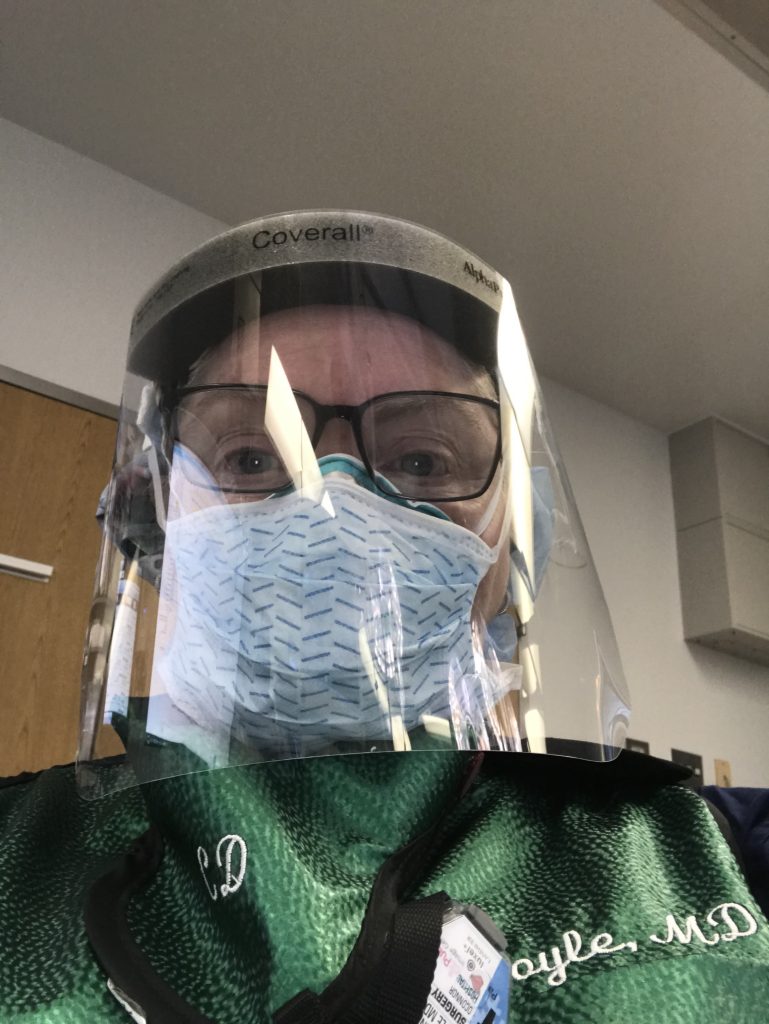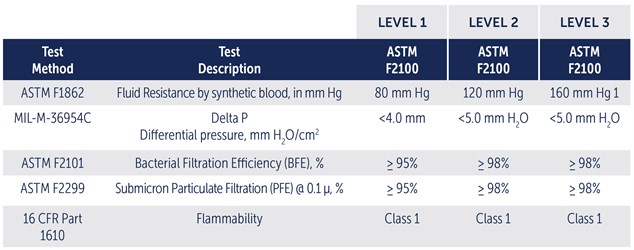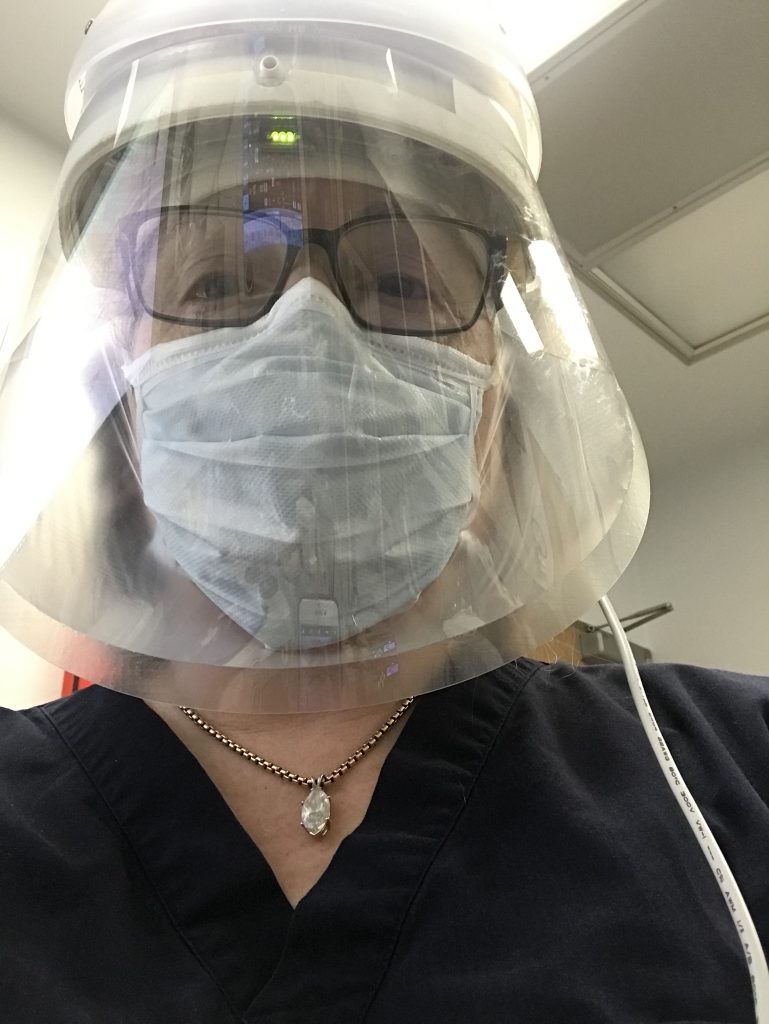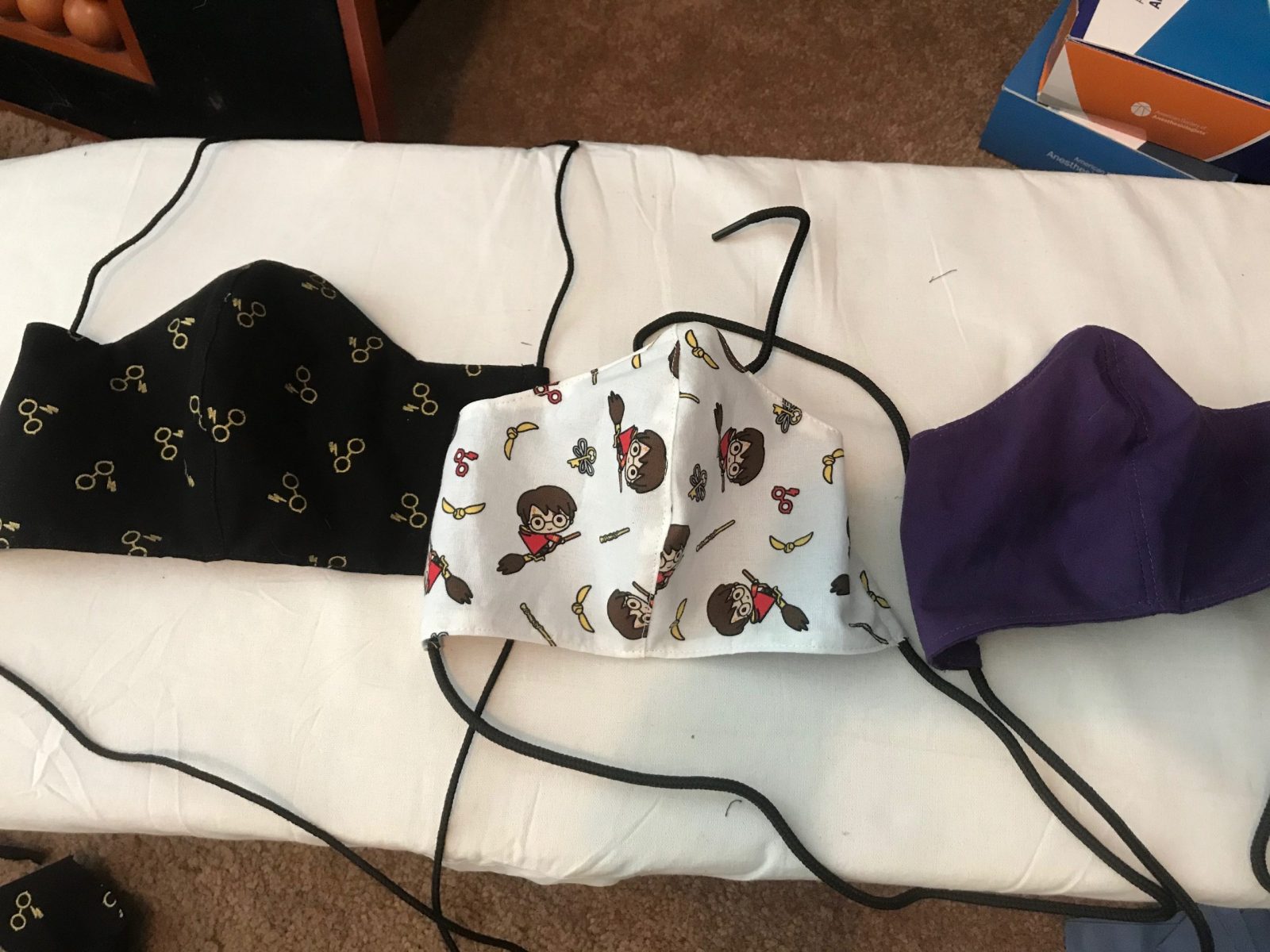Masks, Masks, and More Masks
With the pandemic continuing worldwide, most communities require masks if you’re outside of your home. What are the different types of masks, and which one should you be wearing?
What is the purpose of a mask (or gloves, or cover gowns)? It depends a bit on context. Masks can be used to protect you, or can be used to protect others, or both.
Personal Protective Equipment (PPE) can be rated depending on the context. Are you looking for protection from fire/burns/electrical? Or protection from biohazards? It totally changes what recommendations are made.
PPE for biohazards typically includes respiratory protection (a variety of masks and respirators), eye protection (goggles and face shields), and skin/hand protection (gloves and gowns).

plus a lead apron for x-ray protection.
Masks also have different levels of protection, based on how fine they are and what can get in (or out). Any mask made of fabric or a paper-type product will freely allow oxygen and carbon dioxide to pass; hard plastic masks like scuba or others require a source of fresh air.
The shape of the mask and the way it’s secured also has a role to play in how effective the mask is. Masks can be pleated, cone-shaped, duck-bill, or contoured. They can have an ear loop, an elastic strap, or ties. Each has issues related to fit and efficacy.
I strongly suggest you view this video from Sewstine (also an anesthesiologist), as she makes 4 different types of masks and formally fit tests them. And provides the research behind it all.
Mask Ratings:
Masks are rated by either NIOSH (in the US) or the European Safety Federation (ESF). They will be rated for Particle Filtration Efficiency (PFE) and may also be rated for Bacterial Filtration Efficiency (BFE). They are considered Air-Purifying Respirators because they protect by filtering particles out of the air you breathe.
Both ratings organizations classify masks based on the percentage of airborne particles that are filtered. For NIOSH, the number of the mask is approximately the percentage of the PFE. NIOSH approved masks also have a letter, which has to do with how the mask deals with oil.
- N – solid and liquid aerosols that do not contain oil (Non-oil)
- R – solid and liquid aerosols that may contain oil (Resistant to oil)
- P – solid and liquid aerosols that may contain oil (Protective to oil)
The European P2 mask or FFP2 filter is equivalent to the NIOSH N95. The P3 or FFP3 is equivalent to the NIOSH P99.

Dust Masks aka “nuisance” masks, that you might get at the hardware store, are good for things like gardening, and some tasks like painting or light sanding, but are not adequate for pandemic protection, particularly not in close or indoor situations.
Gaiters will depend on the fabric that was used to make them. Fleece as a whole provides warmth but no filtration efficacy. Many performance fabrics are designed to “breathe” and may protect you, but not protect others.
What about Powered devices?
Powered Air-Purifying Respirators (PAPRs) are types of hoods which have a battery-operated blower that sends purified (filtered) air from a device on a belt or backpack up to the hood so you are breathing clean air. Controlled Air-Purifying Respirators (CAPRs) are a proprietary variant, where the filtration all happens in the helmet portion of the hood. Ortho-hoods, used to protect surgeons during orthopedic surgery, are not filtering the air, so are inadequate alone (but may be used in conjunction with an N-95 mask).

Closing Thoughts
If your goal is a secure fit to prevent aerosol transmission, the mask or other device will need to be very tight to the face. And it will probably be uncomfortable in some way because of that fit. But it will *not* adversely affect your ability to breathe in oxygen or exhale carbon dioxide.
Other resources & reading:
- https://www.sciencealert.com/simple-low-cost-experiment-reveals-which-face-masks-are-best-at-blocking-droplets The way they did the testing is actually more useful than the actual masks they were using.
- I sewed and fit tested four different masks…
